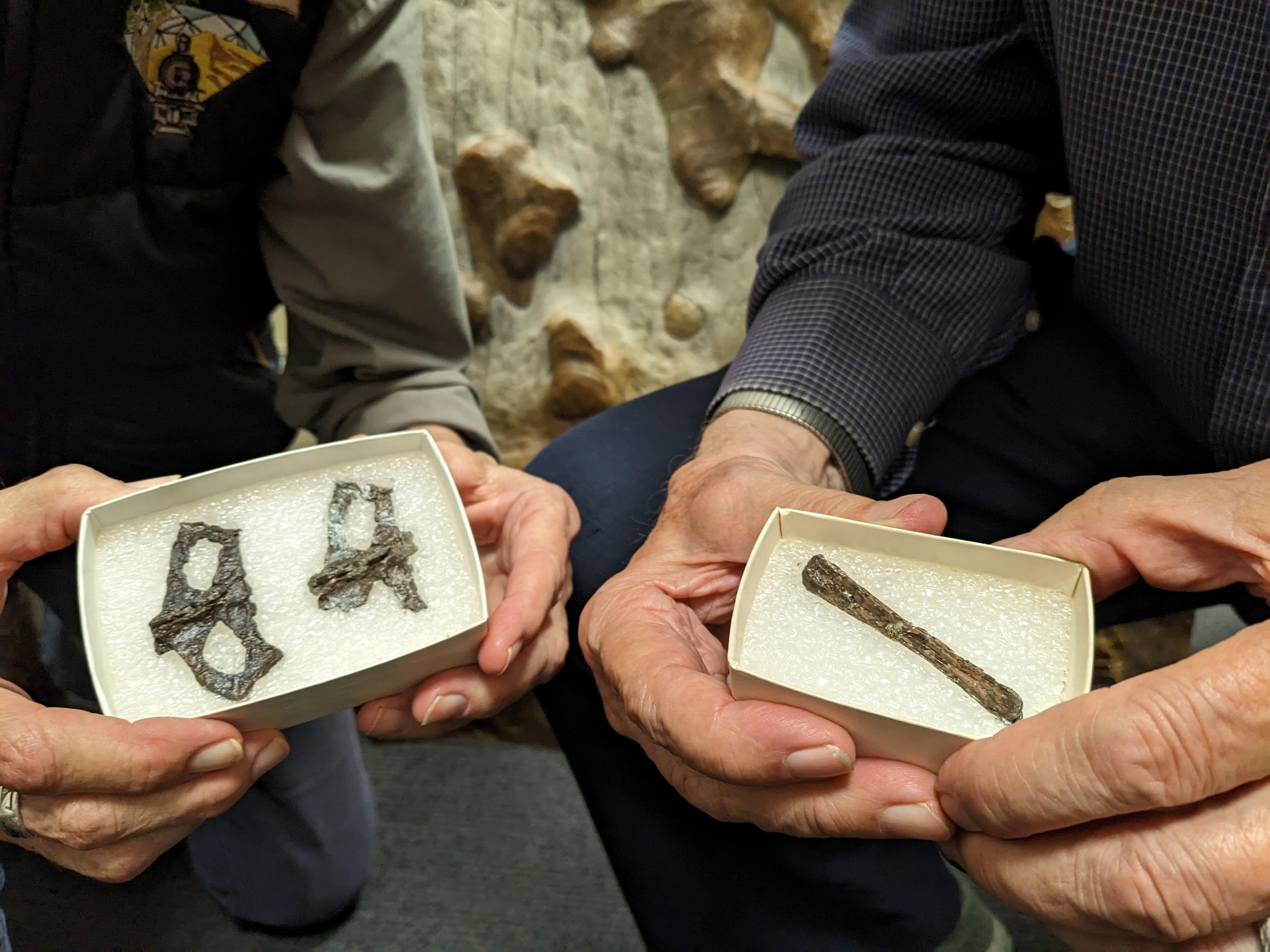Media release
From:
A team of researchers have confirmed that 107-million-year-old pterosaur bones discovered more than 30 years ago are the oldest of their kind ever found in Australia, providing a rare glimpse into the life of these powerful, flying reptiles that lived among the dinosaurs.
Published in the journal Historical Biology and completed in collaboration with Museums Victoria, the research analysed a partial pelvis bone and a small wing bone discovered by a team led by Museums Victoria Research Institute’s Senior Curator of Vertebrate Palaeontology Dr Tom Rich and Professor Pat Vickers-Rich at Dinosaur Cove in Victoria, Australia in the late 1980s.
The team found the bones belonged to two different pterosaur individuals. The partial pelvis bone belonged to a pterosaur with a wingspan exceeding two metres, and the small wing bone belonged to a juvenile pterosaur — the first ever reported in Australia.
Lead researcher and PhD student Adele Pentland, from Curtin’s School of Earth and Planetary Sciences, said pterosaurs — which were close cousins of the dinosaurs — were winged reptiles that soared through the skies during the Mesozoic Era.
“During the Cretaceous Period (145–66 million years ago), Australia was further south than it is today, and the state of Victoria was within the polar circle — covered in darkness for weeks on end during the winter. Despite these seasonally harsh conditions, it is clear that pterosaurs found a way to survive and thrive,” Ms Pentland said.
“Pterosaurs are rare worldwide, and only a few remains have been discovered at what were high palaeolatitude locations, such as Victoria, so these bones give us a better idea as to where pterosaurs lived and how big they were.
“By analysing these bones, we have also been able to confirm the existence of the first ever Australian juvenile pterosaur, which resided in the Victorian forests around 107 million years ago.”
Ms Pentland said that although the bones provide important insights about pterosaurs, little is known about whether they bred in these harsh polar conditions.
“It will only be a matter of time until we are able to determine whether pterosaurs migrated north during the harsh winters to breed, or whether they adapted to polar conditions. Finding the answer to this question will help researchers better understand these mysterious flying reptiles,” Ms Pentland said.
Dr Tom Rich, from Museums Victoria Research Institute, said it was wonderful to see the fruits of research coming out of the hard work of Dinosaur Cove which was completed decades ago.
“These two fossils were the outcome of a labour-intensive effort by more than 100 volunteers over a decade,” Dr Rich said.
“That effort involved excavating more than 60 metres of tunnel where the two fossils were found in a seaside cliff at Dinosaur Cove.”
The research was co-authored by researchers from Curtin’s School of Earth and Planetary Sciences, the Australian Age of Dinosaurs Museum of Natural History, Monash University, and Museums Victoria Research Institute.
The full paper is titled, ‘Oldest pterosaur remains from Australia: evidence from the Lower Cretaceous (lower Albian) Eumeralla Formation of Victoria,’ and can be found online here.



 Australia; VIC; WA
Australia; VIC; WA


